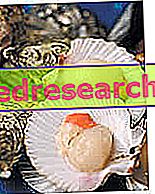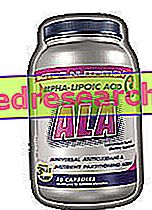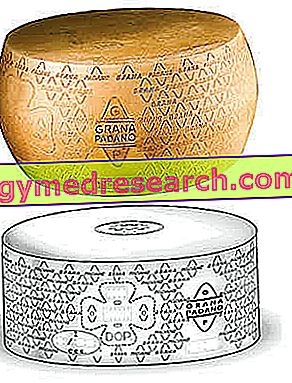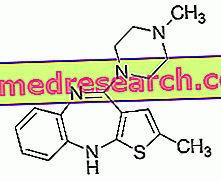Genres and Species
Canestrelli are foods of animal origin that can be classified as fishery products. Also known as sea scallops, they belong to the Phylum dei Molluschi, more precisely to the Bivalve Class (or Lamellibranchi), the same as mussels, clams, fasolari, capesante, sea date and oysters).

In the common imaginary, the sea scallops appear as "small" scallops; however, this is only partially true! Some examples of canestrelli can be:
- canestrello proper or queen scallop ( Aequipecten opercularis )
- various scallop or variegated scallop ( Chlamys varia or Mimaclamys varia )
- scallop ( Pecten jacobaes )
- scallop of the Atlantic ( Pecten maximus )
- scallop glabra ( Flexopecten glaber )
- comb cat's foot ( Chlamys pesfelis ).
Generality
As we have specified, the various types of canestrelli are very similar to each other; on the other hand, to an expert eye (but not too much) certain differences immediately catch the eye. First, the various canestrelli (in adult form) reach quite different dimensions; the larger ones are the scallops, followed by the queen scalop and the variegated scalop, reaching up to the glabrous scallop and the cat's foot comb.
It is possible to state that, in general, those interposed between the large scallops and the smallest cat feet are the canestrello proper and the variegated comb. Let's proceed with the description of the most commercialized, that is the queen scalop .
These baskets reach an average of 7 cm in width; unlike the other types, they can present a more variegated (tendentially reddish) shell and the thickness of the valves is extremely thin. Externally, about twenty rays can be counted on each side of the shell and one of the two is more rounded than the other. Later on, one side of the umbo is more developed than the other. Even the canestrelli, like the scallops, are able to swim in free water by opening and closing the valves quickly; thanks to this characteristic, canestrelli make long migrations for reproductive purposes.
The scallops feed on plankton; they live on average up to 40 meters of depth (with extreme variability among the Species that we have mentioned above) on sandy or gravelly bottoms. The richest area of Aequipecten opercularis is that of the North Atlantic, near the British islands (not surprisingly, in England, canestrelli are known as "Pettini della Regina"). They are fished by means of nets (mainly trawlers), but their progressive decrease has required the adoption of specific conservation rules; in the United Kingdom specific repopulation areas have been established (with considerable success) where fishing is completely prohibited.
Culinary aspects
The scallops or sea scallops lend themselves to many different types of preparations. For cleaning, some suggest cleaning them only after having blanched them; in my opinion, instead, the most profitable method is undoubtedly the opening of the shells with the knife and the raw cleaning (similar to the scallops). Obviously, this method cannot be applied to cat's feet (too small), which must simply be left to drain briefly in a basin with clean seawater.
Recall that canestrelli ( Aequipecten opercularis ), cat's feet and hairless scallops do not contain large quantities of sand (instead present in large scallops); however, the first and second types require the extraction of dark eyes and organs (instead kept in the third).
Medium-sized sea scallops lend themselves to all types of recipes, while smaller ones are generally used to season pasta dishes (pasta and risotto).
The typical preparations in which canestrelli are included are: shellfish gratin, grilled cooking, frying in a pan (for example with saffron sauce, peppers, etc.), crudités and boiled meat to be served cold (like seafood salad) ).
Nutritional Features
Sea scallops have a nutritional value hypothetically comparable to that of scallops. Detailed information is not available and, to tell the truth, the data revealed by certain internet sites show a discrepancy that exceeds 45kcal / 100g; in practice, according to certain sources, the energy supplied by the canestrelli is around 70-80kcal / 100g, while other sources report even 115-117kcal / 100g.
The calories should be around 100kcal and come mainly from high biological value proteins. They would follow the simple carbohydrates (glucose around 2g / 100g) and finally the lipids (<1g / 100g); the fibers are absent and the cholesterol should not be excessive. Among the mineral salts and vitamins there should be no particularly high values.
Remembering that canestrelli may be subject to food allergies, their consumption is not indicated for the breastfeeding woman and for the very young child. On the other hand, by examining the nutritional content, the sea scallops seem to lend themselves to any diet; Low-calorie diets and food therapies against metabolic diseases are no exception.
Video recipe of homemade canestrelli biscuits »



